Email marketing is the oldest yet most effective digital marketing channel out there. You spend one dollar and get more than $40 in return! No wonder almost all marketers ranked email marketing as the #1 best performing digital marketing channel.
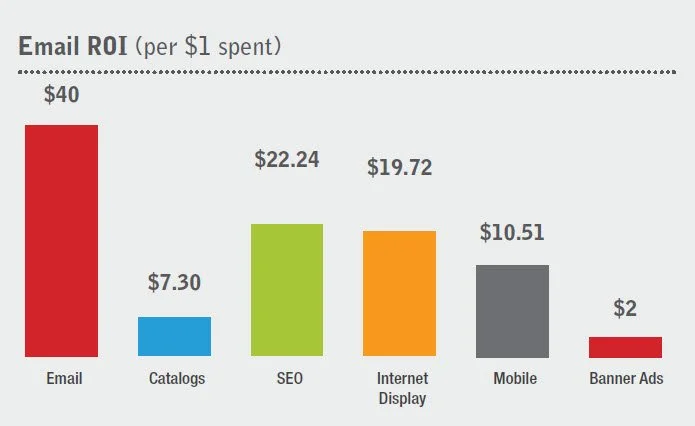
(Source: StarDust Digital)
The best thing about it is that you can reach everyone.
Who doesn’t have an email address, right?
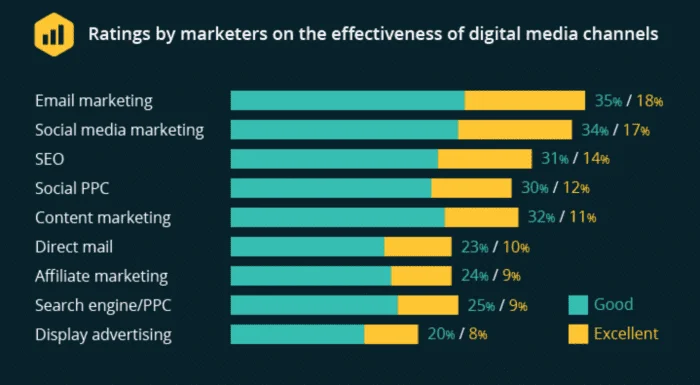
(Source: SmartInsights)
That’s why it’s critical now more than ever to build an effective email marketing strategy.
This post will tell you all you need to know about email marketing and how to create an effective email marketing campaign from scratch.
What Is Email Marketing?
Email marketing is a type of digital marketing that involves sending emails to leads and customers. Newsletters, promotional campaigns, and event notifications are all good examples of email-based marketing messages.
Modern email marketing has shifted away from one-size-fits-all mass mailings in favor of consent, segmentation, and personalization.
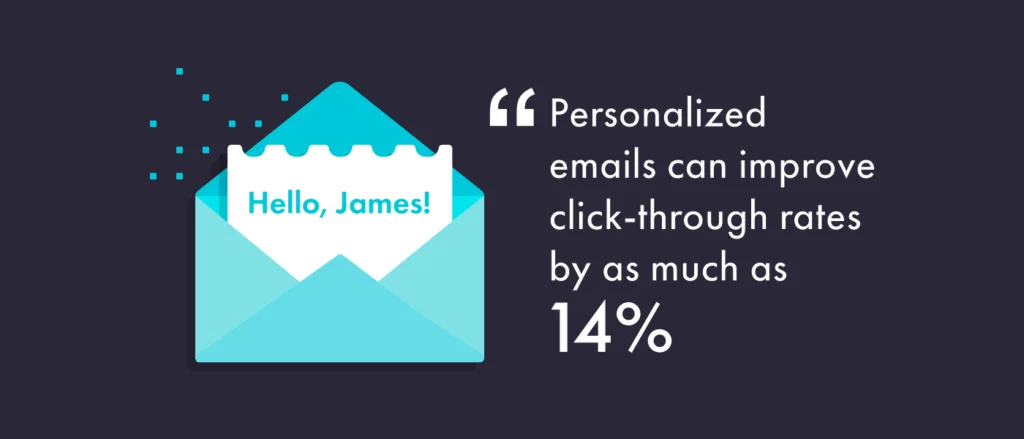
So it’s important to realize that you’re a guest in the lead’s inbox. Though you believe your email is unique. To the receiver, it’s one in a million—and not in a positive way.
Most people are overwhelmed by thousands of emails every single day.
And that’s why it’s essential to be courteous when sending your leads and customers’ emails and find a way to be unique and stand out.
Examples of Marketing Emails
There are three basic types of marketing emails:
- Transactional emails
- Promotional emails
- Engagement emails
We will now discuss these emails in a little more detail and look at some examples so you can quickly identify them.
Transactional Emails
Businesses send transactional emails to customers to provide a service or product. These emails are primarily reactive, sent in response to something a customer has done.
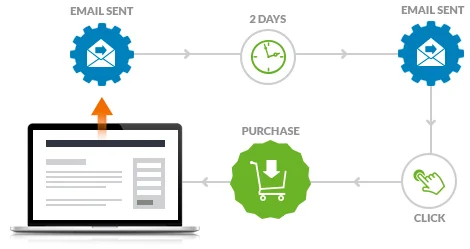
(Source: Making Experience)
When visitors interact with the company’s website or app, like adding a product to an online shopping cart or requesting a password reset, these emails are triggered. Here’s an example of a transactional email from American Giant.
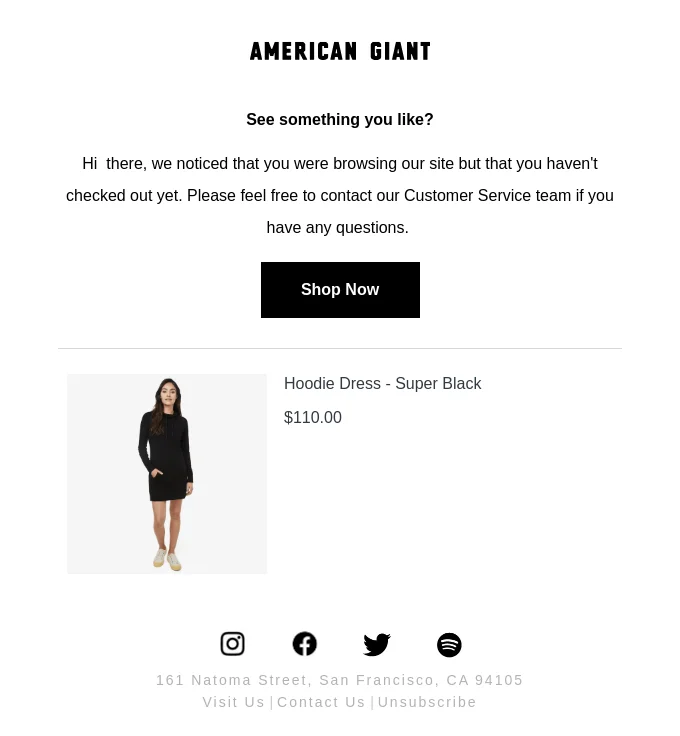
(Source: Really Good Emails)
This email was triggered automatically because a customer abandoned a cart. The effectiveness of emails like that?
69% more orders, which led to a massive increase in the profitability of a business.
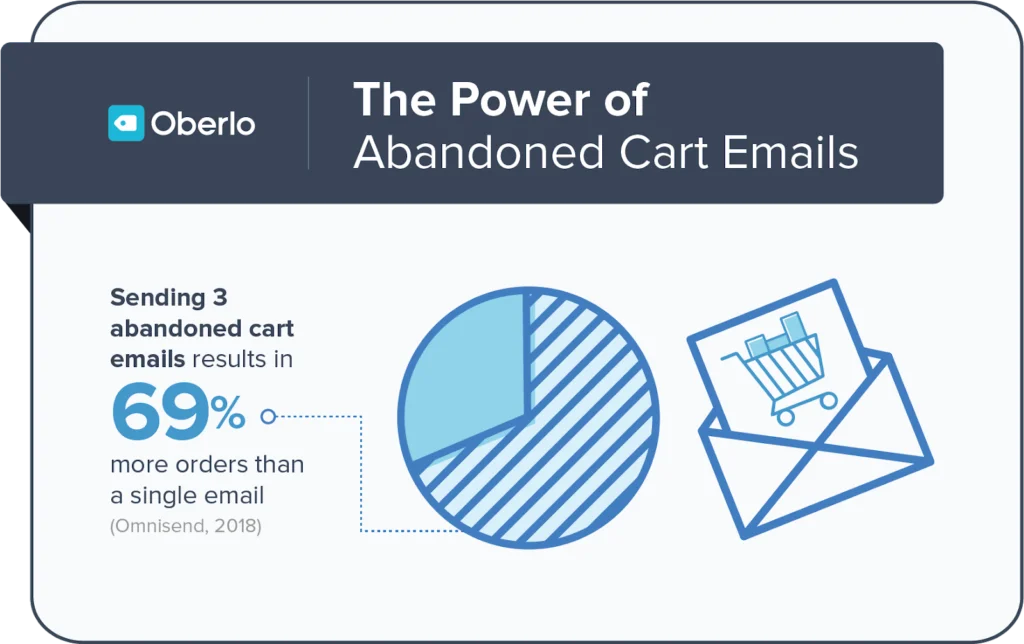
(Source: Campaign Monitor)
Transactional emails usually inform users about the status of their account or order. Here are a few examples of transactional emails.
- Receipts and order confirmation
- Delivery confirmations
- Double opt-in messages
- Password reset emails
- Cart abandonment reminders
While transactional emails may seem straightforward, they’re an excellent opportunity to raise brand awareness and build trust from readers. You might think that confirmation emails don’t matter that much.
Yet, they are one of the most opened and wanted emails from customers.
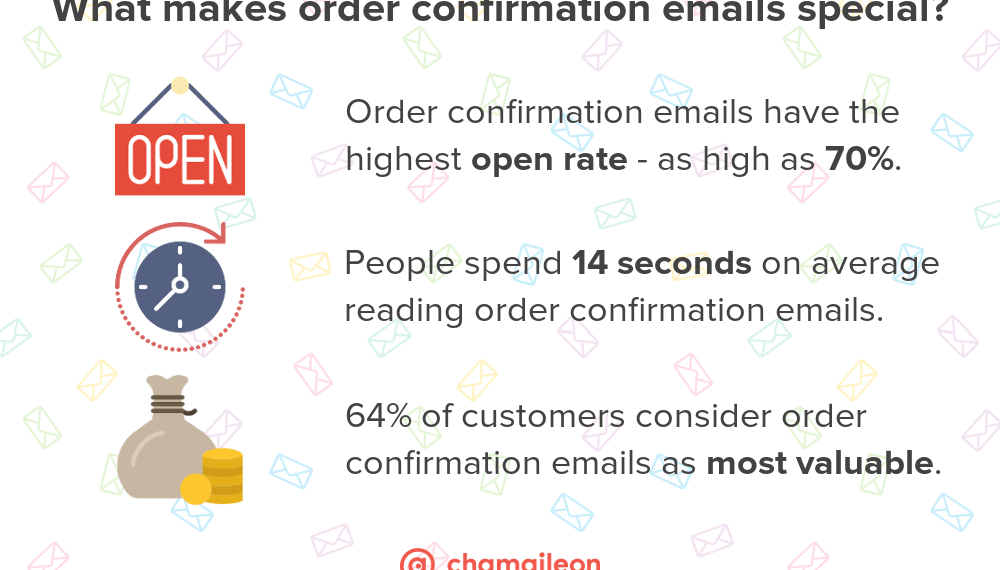
(Source: Chamaileon)
Promotional Emails
Next, we have promotional emails or sales emails—the type of emails that probably comes to mind first when you hear the words “email marketing.”
The most effective promotional emails convince readers to pay for a service or buy a product.
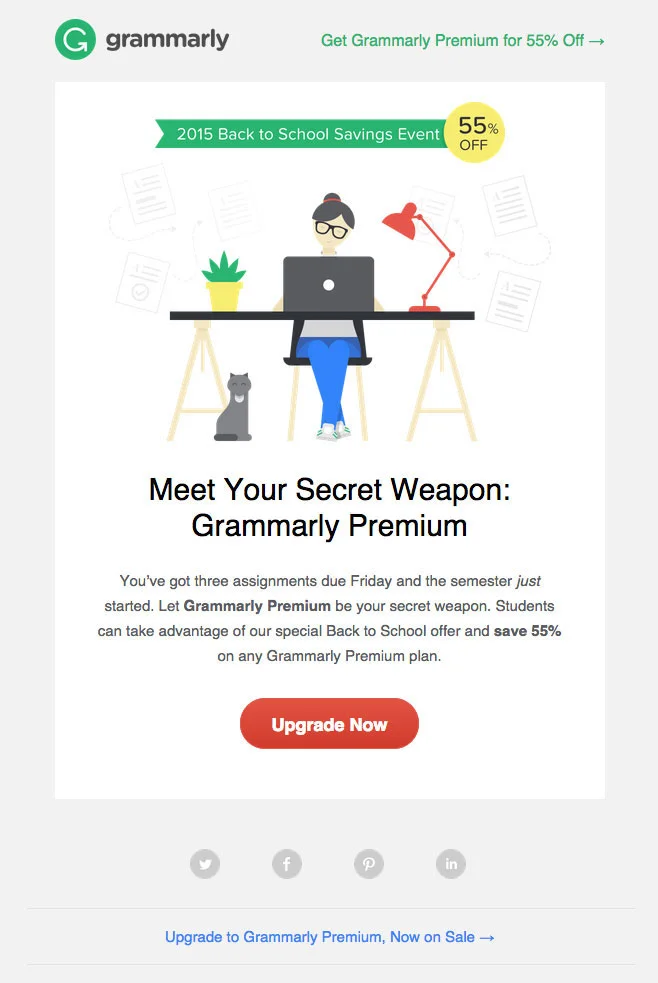
That isn’t all they do, though. When done correctly, these emails can also increase customer engagement and retention. For instance, they can give your audience a valuable discount that can help you convert unsure leads into loyal customers.

(Source: Shopify)
In the example above, Ann Taylor appeals to the customer by giving $25 off a full-price purchase of $75 or more.
Here are some other examples of promotional emails:
- Time-sensitive promotions
- Review/testimonial requests
- Product update emails
- Holiday sales emails
- Affiliate marketing or co-marketing emails
Engagement Emails
Engagement emails strengthen relationships with customers and leads using storytelling, customer education, and reinforcement of brand values.
These emails keep subscribers engaged even when they’re not driven to buy anything.
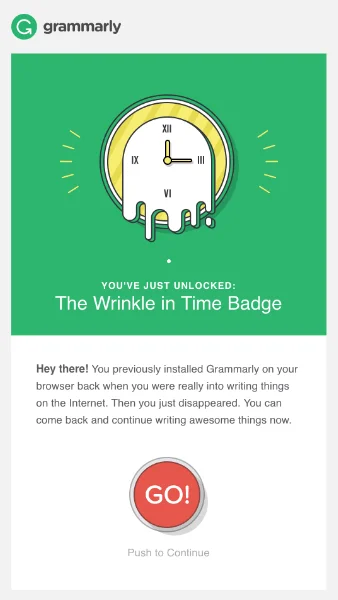
(Source: OptinMonster)
Then, when they’re ready to buy, or when you have something special to offer, they’ll be eager to make a purchase, even if they’re first-time shoppers. Engagement emails usually start with “welcome emails”—the first email subscribers get when they sign up to your email list.
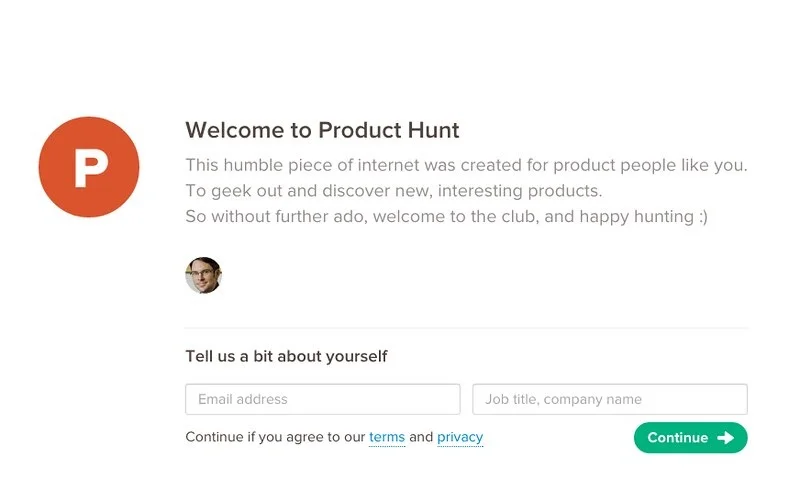
(Source: Flickr)
The welcome email series is important because it gives people their first impression of your business. For example, the welcome email above from Product Hunt keeps it friendly and simple, from the subject line to the conversational tone in the email body.
It’s also one of the most opened and requested emails from leads opting into your email list.
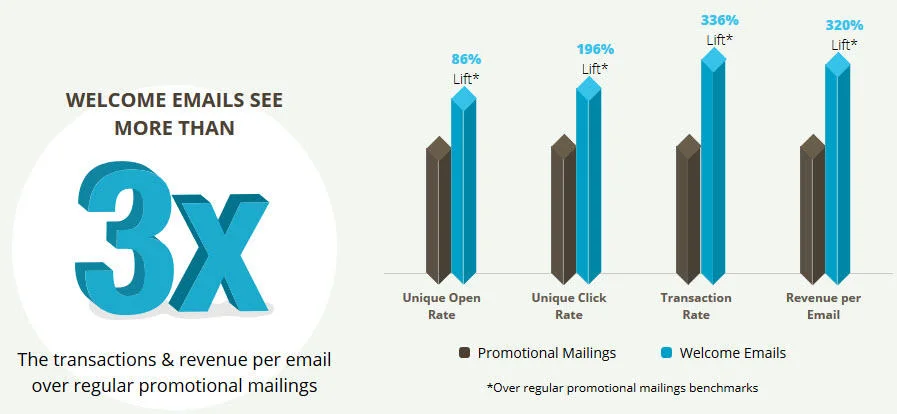
(Source: WordStream)
There are a lot of other types of engagement emails such as:
- Weekly/monthly newsletters
- Tips and tutorials
- Customer stories
- Re-engagement emails
- Lead nurturing emails
How Does Email Marketing Work?
Email marketing is one of the most effective strategies, thanks in part to its automation. That’s why 86% of marketers consider email to be “important” or “very important.”
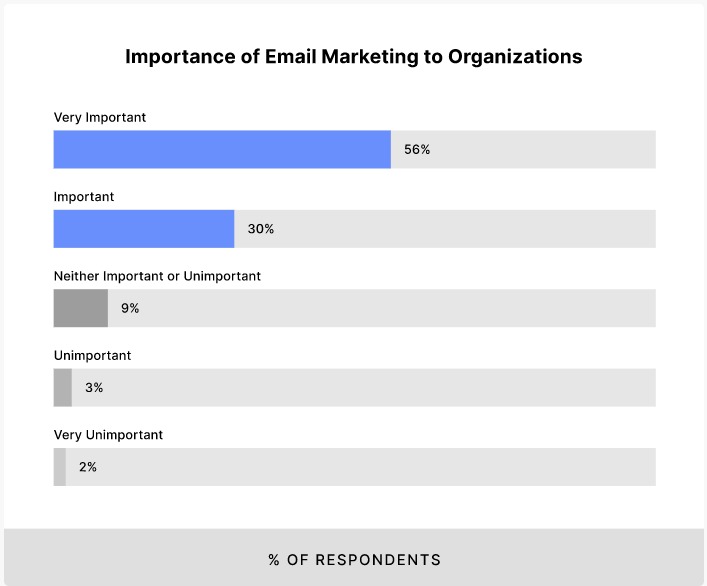
Source: (Backlinko)
In its most basic form, an effective email marketing campaign has two key components:
- A mailing list
- An email service provider
#1: A Mailing List
You can’t send out email marketing campaigns if you don’t have anyone to send them to.
Remember that email marketing won’t work unless you have the right target audience interested in receiving marketing communications from your business.
Though there are many ways to build a mailing list, the easiest is to create a lead magnet.
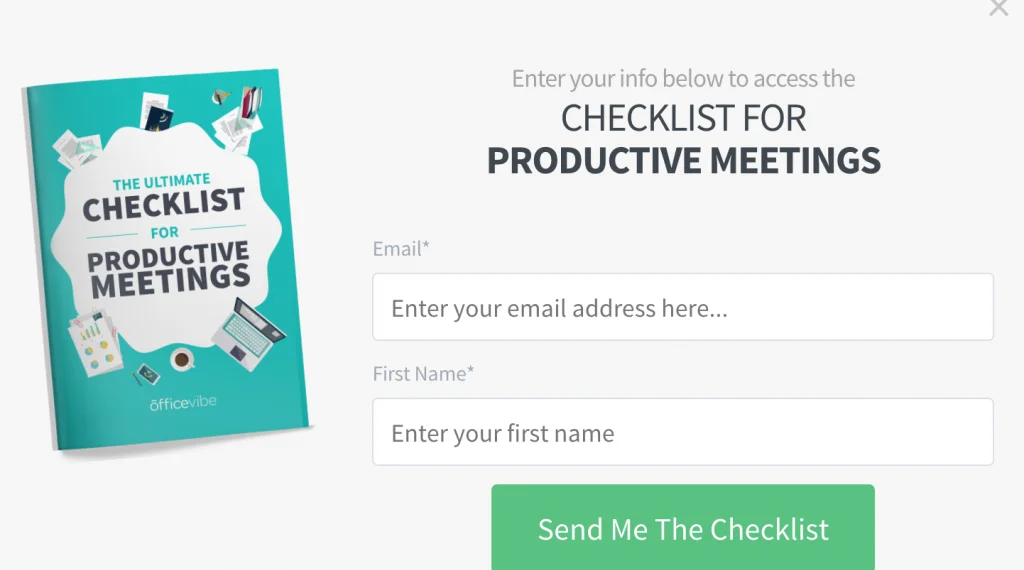
(Source: Digital Marketer)
You can think of lead magnets as bait to get leads to your email list. They are super effective because your readers get something instantly for opting it to your email list.
Here are a couple of examples of great lead magnets.
- Ebooks
- Checklists
- Case studies
- Templates
- Swipe files
In short, the higher the value of your lead magnet, the more signups you’ll receive.
You can see another great example of an excellent lead magnet from 5 Free Meal Plans. It’s a perfect solution for busy moms who struggles to find the time to plan dinner every night.
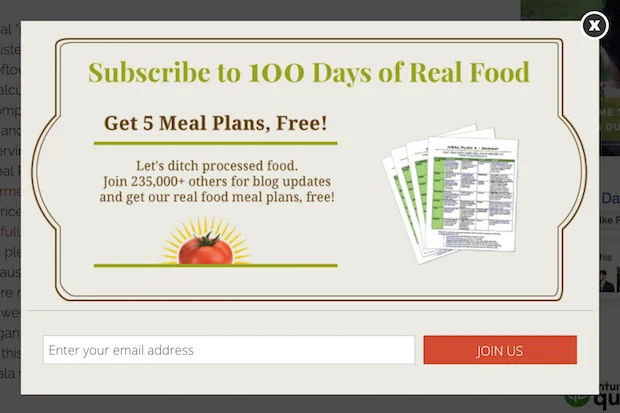
(Source: 5 Free Meal Plans)
Or this cheat sheet created for bloggers below.
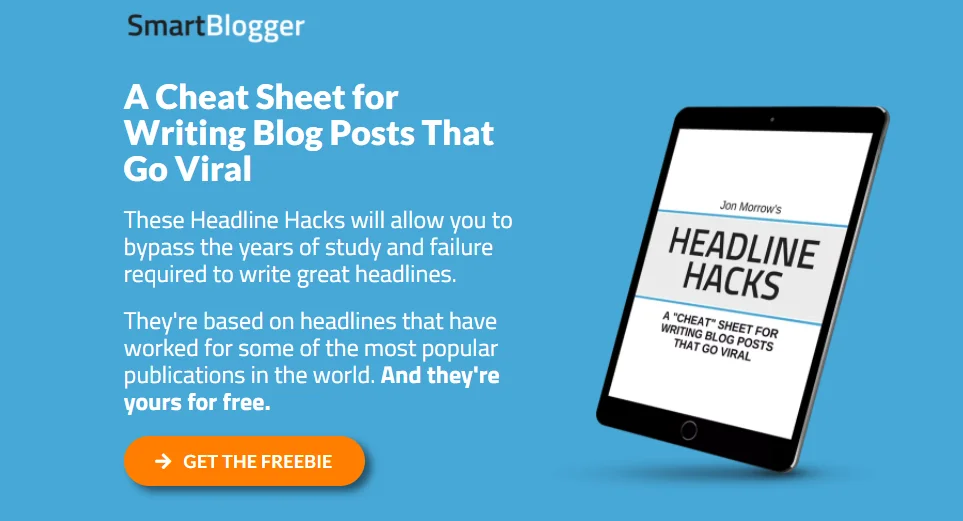
(Source: Smart Blogger)
Of course, bloggers want their blog posts to go viral.
So this is an excellent lead magnet for them – no more scratching heads about how to make blog posts go viral when you have this cheat sheet!
#2. An Email Service Provider
An email service provider (ESP) provides you with the infrastructure to send broadcasts and bulk business emails.
If you send bulk emails without an ESP, they’ll be flagged as spam, and your subscribers won’t receive them. That means you won’t be able to email your prospects as frequently as you should to achieve the highest possible conversion rate.
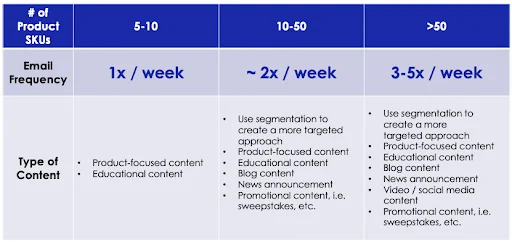
(Source: Retention Science)
Fortunately, ESPs handle all the formalities and costly technicalities. All you have to do is sign up and use their service.
Here are the top five email service providers we recommend.
Note: The “best” option depends on your marketing goals, list size, and features that are essential for you. So, if you’re looking for email marketing software, these reviews should help you pick what suits you best.
SendinBlue
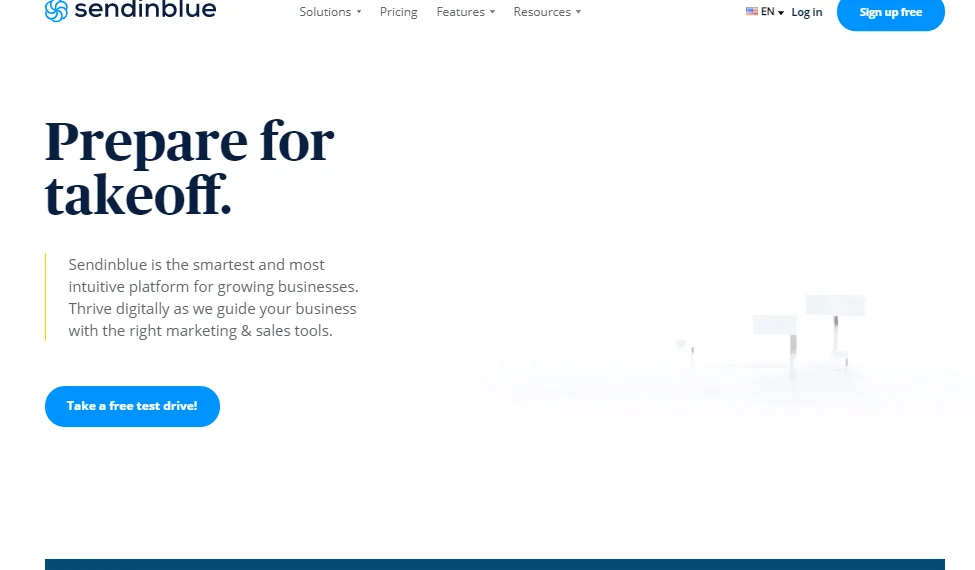
SendinBlue is a complete email marketing platform for businesses that also offers SMS marketing. It helps customers send over 30 million automated emails and text messages in total daily.
SendinBlue also offers a forms tool that captures fresh leads, which you can then segment into specific lists and incorporate into email nurturing campaigns.
Want to improve your email marketing efforts but don’t know how? No problem. SendinBlue workflows give you access to various pre-made automating campaigns tailored to your individual goals.
It has five main plans, but paid options start at $25 per month, with SMS available for an extra fee based on your texting needs.
MailChimp

MailChimp has millions of customers in over 175 countries, and they use the data they collect to give you meaningful insights on how to boost your email campaign.
You can use MailChimp to send simple newsletters. It can also be a whole marketing automation platform that uses behavior-based messaging and cart abandonment emails.
In other words, the software is efficient enough for a large corporation yet sufficient if you’re just getting started. MailChimp has four plans, ranging in price from free to $299 per month. Aside from the free plan, your monthly charge increases with the number of contacts you have.
It can be a bit pricey compared to other tools so if you are on a tight budget, you should look at some more affordable MailChimp alternatives
Constant Contact
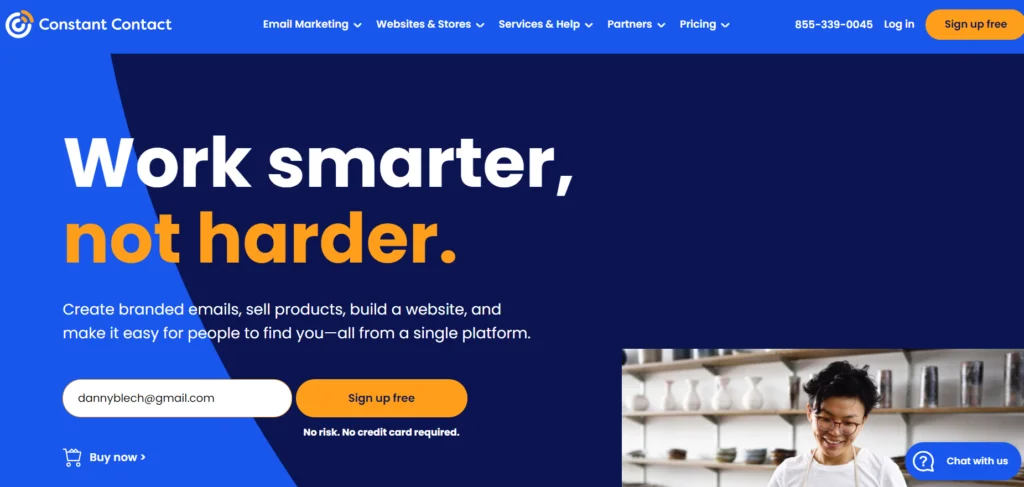
Constant Contact is one of the world’s largest and best email marketing platforms. With templates and drag-and-drop editing tools, you can manage your subscribers and create professional email designs effortlessly.
Constant Contact is mainly geared toward the eCommerce market. That said, some nonprofits, bloggers, and service businesses use it too.
It offers two plans ranging from $20 to $45, depending on the features you need. The price difference is related to the number of contacts you have.
(Not sure whether to go with Constant Contact or MailChimp? Check our comparison guide and pick the right solution right now!)
ConvertKit
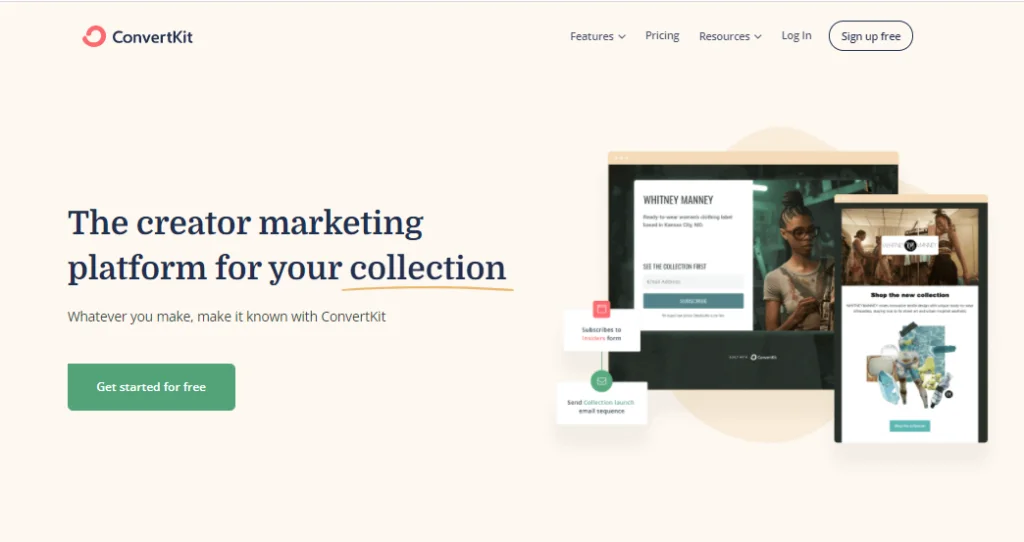
What makes ConvertKit unique is that it’s targeted at professional bloggers, speakers, and authors. So if you’re an online creator, you can’t go wrong with ConvertKit.
ConvertKit is best if you’re just getting started but know you’ll need some advanced features in the future, like complex autoresponders.
Paid plans for up to 1,000 subscribers start at $29 per month and increase steadily from there. They also have a 14-day free trial.
AWeber
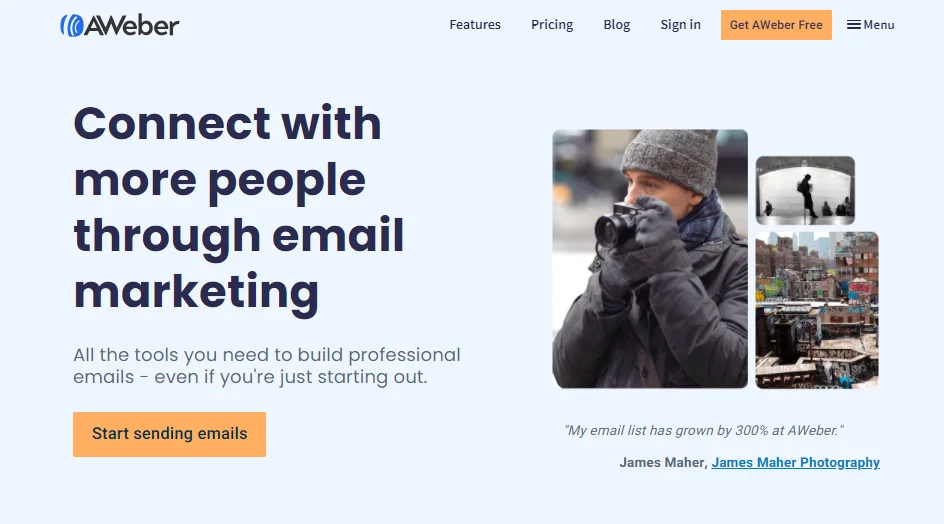
AWeber is the king of simplicity – that’s why it’s best for small businesses and entrepreneurs.
If you want reliable and straightforward software for sending newsletters and autoresponder emails, AWeber is your go-to choice. They have some marketing automation tools. But it’s pretty basic compared to most ESPs.
Customers have praised their deliverability – AWeber’s deliverability team monitors their servers 24/7 to ensure your emails consistently reach your recipients’ inboxes.
Paid plans start at $19 per month. As long as your list has fewer than 25k subscribers, you can try out any plan for free for 30 days.
Comparing Common Email Service Providers
Here’s a comparison of the pricing, levels of support, and features of popular email marketing software solutions we have talked about above.
| Software | Key Features | Support | Landing Page Tool | Pricing |
|---|---|---|---|---|
| SendinBlue | SMS marketing. Email templates and designers. | Email. SMS. Facebook. Live chat. CRM. | Yes | From $25/mo |
| MailChimp | Free plan. Email designs. | Knowledgebase. Email (premium). Live chat (premium). Telephone (premium). | Yes | From $14.99/mo |
| Constant Contact | eCommerce integration. Email design. | Knowledgebase. Twitter. Facebook. Live chat. Telephone. | No | From $20/mo |
| ConvertKit | Tagging and automation. | Knowledgebase. Email. Twitter. Facebook. Live chat. | Yes | From $29/mo |
| AWeber | Ease of use. Deliverability. | Knowledgebase. Email. Live chat. Twitter. Telephone. | No | From $19/mo |
You can also take a look at our in-depth comparison of all popular email services providers. I go into much more detail there.
It’s a must-read for every serious businessman starting with email marketing.
How to Automate Your Email Marketing
While the automation process differs from one ESP to another, there are a few universal steps to automating your email marketing strategy.
However, automation, like any tool, is all about how you use it.
When used correctly, it can help you get your emails in front of the right people at the right time. Which is a lot better than sending the same message to everyone on your list.
Automate Your Email Campaigns by Defining Your Segment
Segmentation groups your subscribers based on the data you have about them, allowing you to create more personalized campaigns.
According to Accenture, 91 percent of consumers say they’re more likely to shop with brands that provide relevant offers and recommendations.

(Source: Accenture)
Additionally, 72 percent of consumers say they only interact with personalized messages.
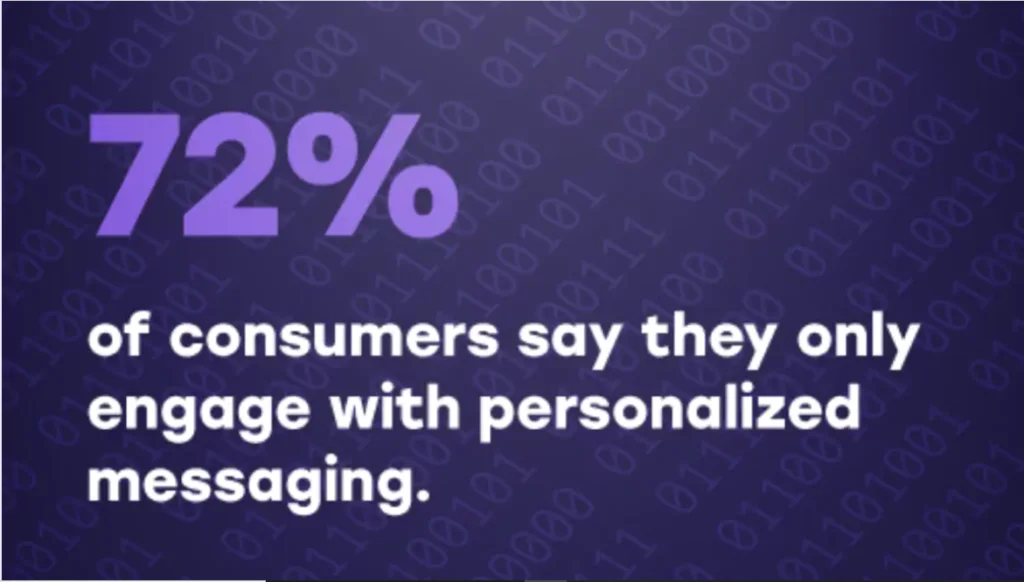
(Source: SmarterHQ)
In a nutshell, if you’re not giving relevant information, you’re losing money. Fortunately, with email segmentation, you have unlimited options for personalizing your email marketing campaigns.
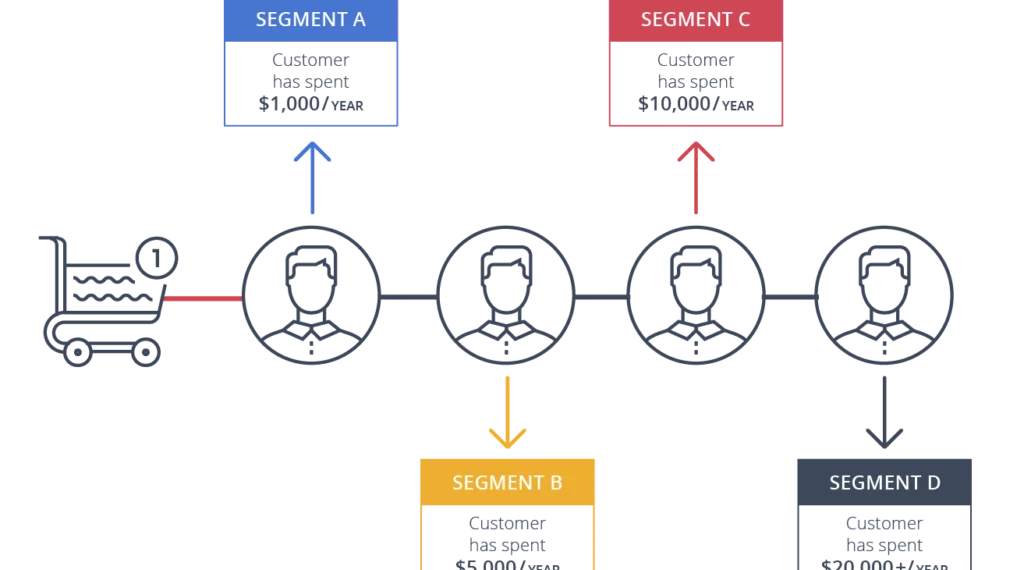
(Source: Marketing Insider Group)
For example, you can segment your subscribers according to their position in the sales funnel. The emails you send to those at the top of the funnel should be different from those at the bottom.
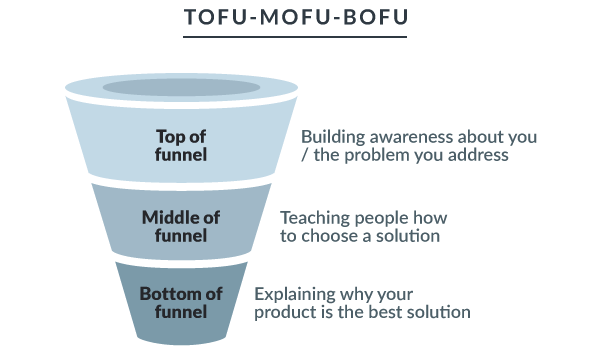
(Source: WordStream)
You can send more generalized emails to a group of brand-new subscribers, providing a range of the products you offer.
If they’ve been signed up for some time and interacted with your emails (like clicking through a link), you can use this data to know what exactly they’re interested in and send targeted emails on that product.
Cart abandonment is a good indicator that someone’s at the bottom of the funnel. In the second quarter of 2021, the rate of mobile phone cart abandonment was 80.6 percent.
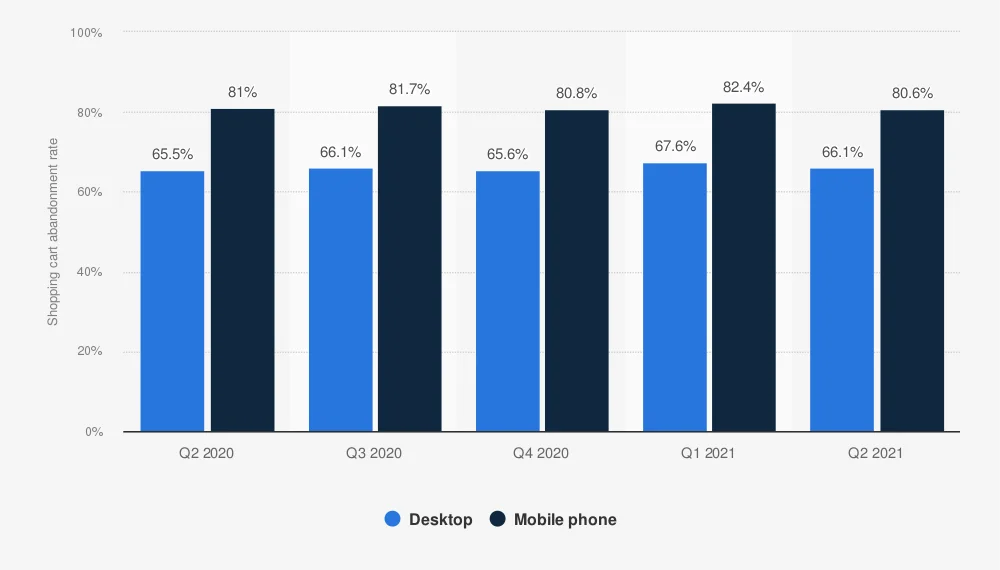
(Source: Statista)
The customers intended to buy, but something stopped them from doing so.
This opens an opportunity to send them a follow-up email reminding them that their cart is still available or a message showing the products they were about to buy.
Here’s an example from Rudy’s on how you can follow up:
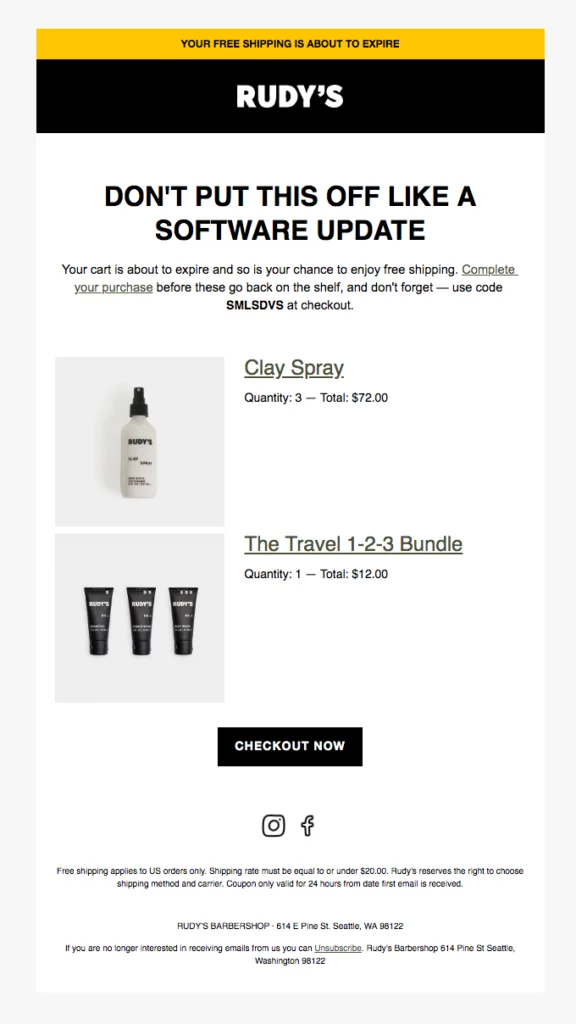
(Source: Really Good Emails)
Other types of email segmentation ideas you can add to your campaign include:
- Demographics—this can be information such as gender, age, income level, and company position.
- Survey or quiz results—a survey provides you with valuable demographic data and insights into individual preferences and beliefs.
- Email engagement—the main metrics here are open and click-through rates, which you track in your email marketing service.
- Geographic area—geographic area segmentation is a valuable tool, especially for businesses where location heavily influences buying decisions.
- Past purchases—here, you send out email recommendations for similar products to complement your customers’ previous purchases.
- Amount spent—use customer expense history to evaluate which customers are more likely to purchase higher-priced items and which are more interested in low-cost items.
- Website behavior—for example, you can send personalized emails based on the specific pages your subscribers visited.
- Time since last purchase—you can split your customers into two significant groups: Frequent buyers and one-time customers.
Wrap Up
Email marketing isn’t just for businesses with advanced marketing automation software. With a simple email marketing tool and a little creativity, you can start targeting your audience and generate huge returns.
You can apply some of the ideas presented in this guide to your business, like automating your email campaigns through email segmentation.
Now it’s your turn.
What email marketing strategies did you like the most? Or did we forget something important? Either way, let us know in the comment section right now.
